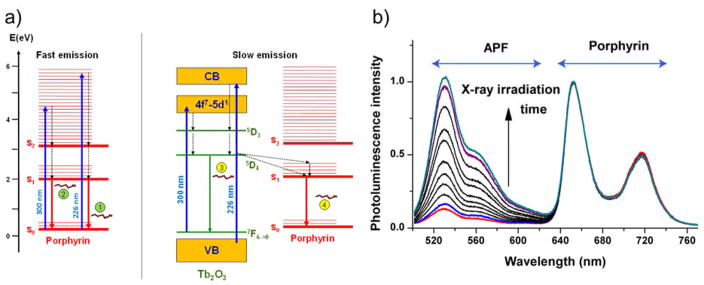Scheme 4.
(a) (Left) Direct excitation of porphyrin by 226 or 300 nm lasers. Porphyrin is excited to high vibrational energy levels and relaxes in a non-radiative decay to the S2 then S1 level. Relaxation from S1 to S0 results in visible emissions 1 and 2. (Right) Indirect excitation of porphyrin. Tb2O3@SiO2 absorbs energy from light at 226 or 300 nm and is then excited to higher energy levels. Once nonradiative decays to 5D4 level, Tb can either emit visible light 3 or transfer energy to porphyrin to emit red light 4. (b) Emission spectra measured under a 490 nm diode excitation after increasing X-ray irradiation time. The Tb2O3@SiO2 grafted TPP is more efficient in generating ROS that oxidize APF under X-ray irradiation than porphyrin solution. Reproduced with permission from [86]. Copyright 2013 American Chemical Society.

